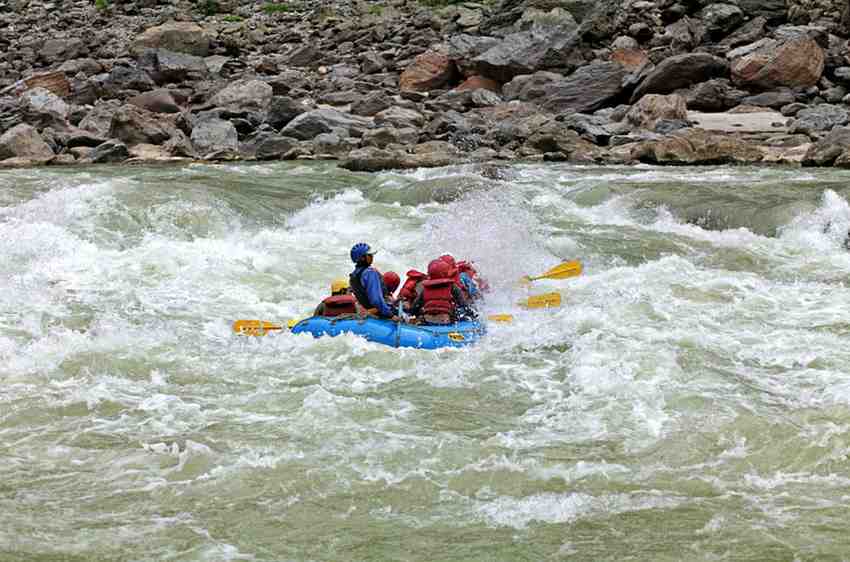


From fast rapids to peaceful floats, Nepal’s rivers deliver real adventure and pure connection with nature
Nepal has some of the best white-water rafting in the world. The rivers here flow directly from the Himalayas, which means you get fresh glacial water, deep gorges, and big rapids. Popular rivers like the Trishuli, Bhote Koshi, Seti, Kali Gandaki, and Sun Koshi offer options for all levels.
Each river has its own personality. Trishuli is perfect for a quick one or two-day adventure. Bhote Koshi is known for its intense and fast rapids. Seti River is great for families and first-timers. Sun Koshi and Karnali are longer expeditions that take you into untouched parts of the country.
Rafting in Nepal is not just about paddling through waves. It is a journey. You float past remote villages where children wave from the shore. You set up camp on sandy beaches under the stars. You eat meals by the fire and fall asleep to the sound of the river.
The trips also bring you close to the environment. Birds, monkeys, waterfalls, and deep jungle are all part of the view. Some rivers pass through protected areas, so you might even spot wildlife along the way.
Whether you are a first-time rafter or someone looking for real adrenaline, Nepal has a river for you.
Easy Float Trips – Perfect for beginners and families. Seti and lower Trishuli offer fun with mild rapids.
Intermediate Rafting – Good for travelers with some experience. Kali Gandaki or upper Trishuli mix thrills and scenery.
Advanced Adventures – Sun Koshi and Bhote Koshi are for those who want strong rapids, multi-day trips, and full immersion in nature.
Long Expeditions – The Karnali River offers 7 to 10-day trips through untouched western Nepal, combining big water and deep wilderness.
You can choose from day trips or longer expeditions. Many travelers use rafting as a break between treks, while others come to Nepal just for the rivers.
All professional rafting companies in Nepal provide safety gear including helmets, life jackets, paddles, dry bags, and trained guides. Before hitting the water, there’s always a safety briefing.
The guides are skilled in rescue and river navigation, and they know how to read the water. Most rafting trips also have a safety kayaker for support.
Even if you have never rafted before, you will feel secure. What matters most is listening to your guide and paddling as a team.
The ideal time for rafting in Nepal is between September to November and March to May. During these months, the water levels are just right—not too high and not too low.
Monsoon season (June to August) brings powerful water and is best left for experienced rafters. Winter (December to February) is possible in lower-altitude rivers but may be too cold for overnight trips.
Rafting trips also include cultural touches. You might visit small riverside temples, walk through remote villages, or share a drink with locals along the way. The rivers often have historical and spiritual meaning, especially for the communities living nearby.
This blend of nature, culture, and movement makes rafting in Nepal a complete experience—not just a thrill but a story.
Rafting in Nepal lets you feel the pulse of the country in a different way. It is fast, it is raw, and it is peaceful all at once. From short runs to long adventures, every trip gives you a real look into Nepal’s beauty.
Whether you come for the adrenaline or the calm, you leave with more than just wet clothes. You leave with memories of wild rivers, open skies, and powerful moments that stay long after the water dries.
